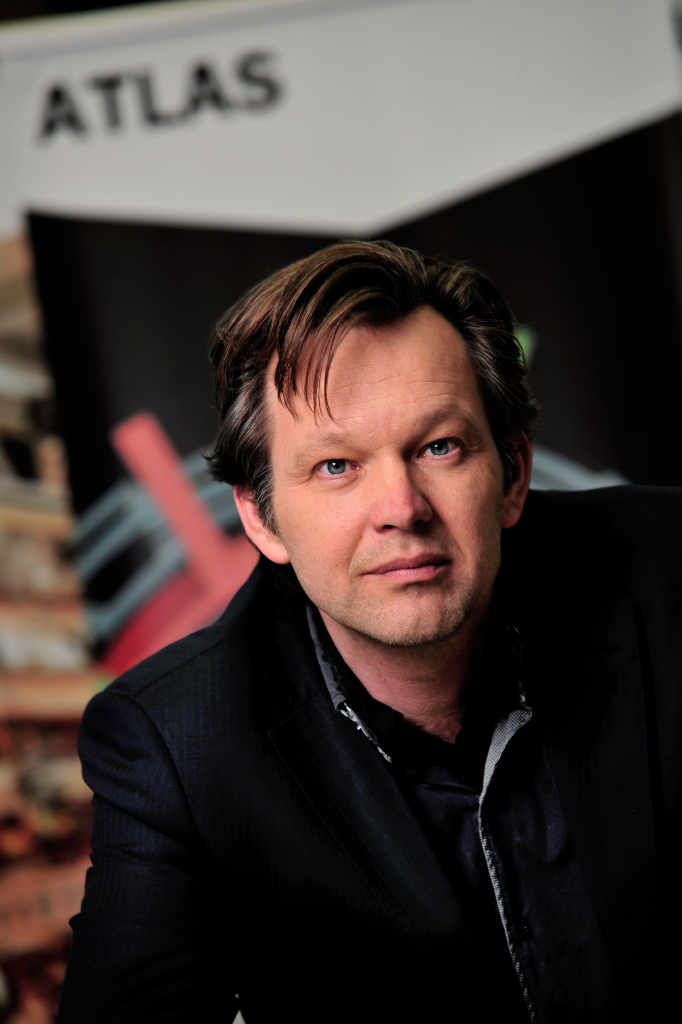When looking back on 2018, the Nikhef staff’s effort in getting and keeping experiments working and analysing data in such a persistent way, while in the meantime also helping to arrange funding, is striking. Let me reflect in a little more detail what 2018 brought us.
First of all, 2018 brought sad events. On November 8, André Mischke passed away. He had been fighting a serious illness for more than a year, but had always been upbeat and optimistic about his recovery. Also, tragically, Els Koffeman suffered a serious stroke and we are all looking forward to her full recovery.
This is in sharp contrast to a year filled with successes for Nikhef. KM3NeT, XENON, Auger and Virgo/ET have received substantial subsidies from NWO. NWO also has made the decision to fund the renovation of the Nikhef building in Amsterdam. Placing a bid for the Einstein Telescope (ET) in the Limburg Province has come closer with the funding made available by Interreg, the Limburg Province, the Ministries of OCW and EZK and by Belgium partners. Moreover, a lot of effort was put in the founding of the Einstein Telescope consortium in the Netherlands, Belgium and Germany. In September an intention letter was signed to collaborate on the exploration of the option to construct ET in the South Limburg region. Nikhef prepared to make measurements of seismic vibrations in the deep underground of that area. And in addition, plans to construct a R&D ET-pathfinder were made more concrete.
The LHC experiments in which Nikhef participates, have made excellent progress this year. Six years after the initial Higgs-boson discovery ATLAS has observed the boson’s interactions with top and bottom quarks. LHCb has observed intriguing discrepancies in the decay of B-mesons, and needs more data to be able to make a firm statement on new physics phenomena. Yet, LHCb discovered two new particle states made of three quarks (baryons) and has found evidence of another exotic particle made of 4 quarks (a tetraquark). ALICE has observed for the first time the production of “charmed baryons” in collisions of lead nuclei at the LHC. The study of these particles allows a better understanding of the strong interaction described by QCD.
After an outstanding performance the CERN accelerator complex stops for two years for major improvements and upgrading. In this last year of Run2 the LHC reached its ambitious target of 65 inverse femtobarns of data. Civil engineering for CERN’s future high-luminosity LHC now starts to prepare a major upgrade. During the high-luminosity LHC, the collision rate will be increased by a factor of 10, and thereby its potential for new discoveries.
The KM3NeT collaboration received funding from the Dutch National Roadmap of Large Infrastructures and this provides an excellent future of the experiment. Although the seafloor network has been delayed, the deployment of more KM3NeT detector lines in the Mediterranean Sea is underway. Nikhef started a small participation in ProtoDUNE at CERN, a prototype for an international neutrino experiment, and is responsible for its read-out electronics. First particle tracks have been observed, after the protoDUNE experiment went live in September.
Although the measurements of the XENON1T experiment gave no indications of collisions between dark matter particles and xenon atoms, the absence of those collisions led to the exclusion of a large number of theories. The result of the XENON1T experiment has become the second most cited result of 2018 in (astro)particle physics. The XENON1T experiment for the search of dark matter terminated in December, the much bigger XENONnT will be its successor.
The pioneering work in the field of Astroparticle Physics of Nikhef researcher Jörg Hörandel from the Radboud University Nijmegen is honored by the European Research Council with an Advanced Grant. Together with the successful NWO-Groot proposal, radio waves will be used to measure the properties of cosmic rays. The work has been pioneered with a 17 square kilometer prototype detector at the Pierre Auger Observatory in Argentina.
More emphasis will be at Nikhef on communication in its broadest sense. Martijn van Calmthout as new head of the communication department, will take initiatives for new activities. So, a new magazine DIMENSIES will be made and discussions among staff will be organized about how to communicate with the outside world.
The Restricted ECFA – a sub-committee of ECFA (European Committee for Future Accelerators) which evaluates the particle physics & astroparticle physics projects in the ECFA member states about once every seven years – visited The Netherlands in October, discussing the Dutch developments and congratulating Nikhef on its results. By May 2020 an update of the European Strategy for particle physics in a global context should be agreed upon. This strategy could thereafter be a roadmap for funding agencies to define concrete research programmes. In April 2018, the prestigious international conference on the Future Circular Collider took place in the Beurs van Berlage, for which Nikhef organised a very successful public evening event.
As a last point, I like to stress that we care about the young generation of students that is motivated to join the endeavour in particle and astroparticle physics. We care about talent and we hope that Nikhef is the place to get inspired!
Stan Bentvelsen – director Nikhef
